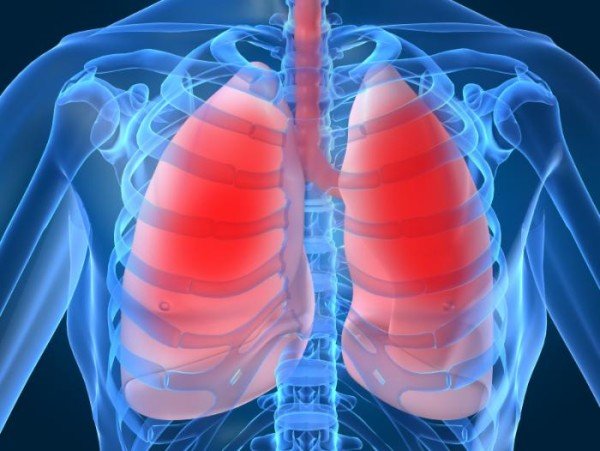7 Health Effects of Smoking on Your Body

Smoking harms almost every part of the body, including the skin, eyes, circulatory system, respiratory system, and even the reproductive system. Smoking also causes an increased risk of many different diseases, including cancer and diabetes.
Each year in the United States, almost 500,000 people die from tobacco use-related illnesses. In fact, smoking cigarettes kills more Americans than car accidents, alcohol, guns, illegal drugs, and HIV combined.
Here are seven ways that smoking impacts your health. By switching to a tobacco alternative, you can get the nicotine you need without the tobacco.
1. Lung Damage
When a cigarette is inhaled, nicotine and dozens of other chemicals are introduced into the respiratory system. Smokers are at a 25 times higher risk of developing lung cancer than non-smokers.
Aside from an increased risk of lung damage that may lead to lung cancer, smoking also increases the risk of chronic bronchitis, emphysema, and chronic obstructive pulmonary disorder (COPD). In all cases of COPD, 9 out of 10 are linked to smoking.
Smoking also damages the airways, which contributes to the infamous smoker’s cough.
2. Damage to Cardiovascular System
While there are many factors that increase the risk of heart disease, smoking is one of the top lifestyle habits that contribute to the disease. Those who smoke, as well as those who are exposed to secondhand smoke, are at an increased risk of heart disease and heart attacks.
Tobacco smoke also lowers good cholesterol (HDL) levels in the body, while increasing bad cholesterol (LDL). Tobacco smoke has also been linked to increased triglycerides and total cholesterol in the blood.
Nicotine causes blood vessels to tighten, which restricts blood flow throughout the body. This increases the risk of stroke, heart attack, and high blood pressure.
3. Damaged Immune System
Smokers are more likely to have more respiratory tract infections when compared to people who don’t smoke. This is not only because smoking damages the lungs, but it also impacts the immune system’s ability to fight off infections.
This means that smokers will experience more severe and longer-lasting illnesses. Smoking has also been linked to lower levels of antioxidants in the blood, including vitamin C.
Smoking also increases inflammation throughout the body.
4. Vision Problems
While your vision may not be impacted immediately, smoking has shown to have negative effects on the eyes. Long-term smokers are likely to experience future vision problems, including cataracts, macular degeneration, and glaucoma.
Smoking also increases the risk of damage to the optic nerve. This is the nerve that connects the eye to the brain. Excessive damage to the optic nerve can cause blindness.
In the short-term, smokers are likely to experience dry eyes, which makes the eyes red and scratchy.
5. Fertility & Reproductive System Issues
Smoking damages both the male and female reproductive systems. For men, smoking increases the risk of erectile dysfunction. Smoking also negatively impacts the quality of sperm, which reduces fertility.
For women, smoking can make it much more difficult to get pregnant. This is often attributed to tobacco and the many other chemicals that are found in cigarettes. These chemicals impact hormone levels, which then impact fertility. Women also experienced an increased risk of developing cervical cancer.
Smoking also has profound impacts on pregnant women as well as the developing fetus. Common complications include:
- Increased risk of preterm delivery
- Increased risk of ectopic pregnancy
- Reduced birth weight
- Damage to the baby’s brain, lungs, and central nervous system
- Increased risk of congenital abnormalities, such as cleft palate and cleft lip
- Increased risk of sudden infant death syndrome
6. Impacted Digestive System
Smoking suppresses the appetite because it decreases your sense of taste. This makes eating a lot less enjoyable because you can’t taste the food that you’re putting into your mouth.
Smoking has been linked to many different cancers, including cancer of the mouth, throat, esophagus, and larynx. There’s also an increased risk of pancreatic cancer.
Smokers are also more likely to develop insulin resistance, because of how smoking impacts insulin. Insulin resistance increases the risk of type 2 diabetes, along with the many complications associated with the disease.
7. Damaged Hair, Skin, & Nails
Smoking impacts the hair, skin, and nails in many ways. Smokers are at an increased risk of hair loss, balding, and early graying. This is due to the high nicotine content found in cigarettes.
Smoking also visibly impacts the skin. Tobacco smoke changes the structure of the skin, which can lead to dry skin and premature aging. This is because nicotine reduces blood flow, which impacts the skin’s ability to get the nutrition it needs.
People who smoke are also at an increased risk of developing skin cancer.
Routine handling of tobacco products stains the fingers and fingernails a yellow color. Aside from staining, smokers face a higher risk of fungal nail infections.
Conclusion
It’s an understatement to say that smoking has a profound impact on the body. While it’s not easy to quit smoking, doing so can greatly improve your overall health now and long into the future. Quitting smoking is the key to living a happier, longer life.


